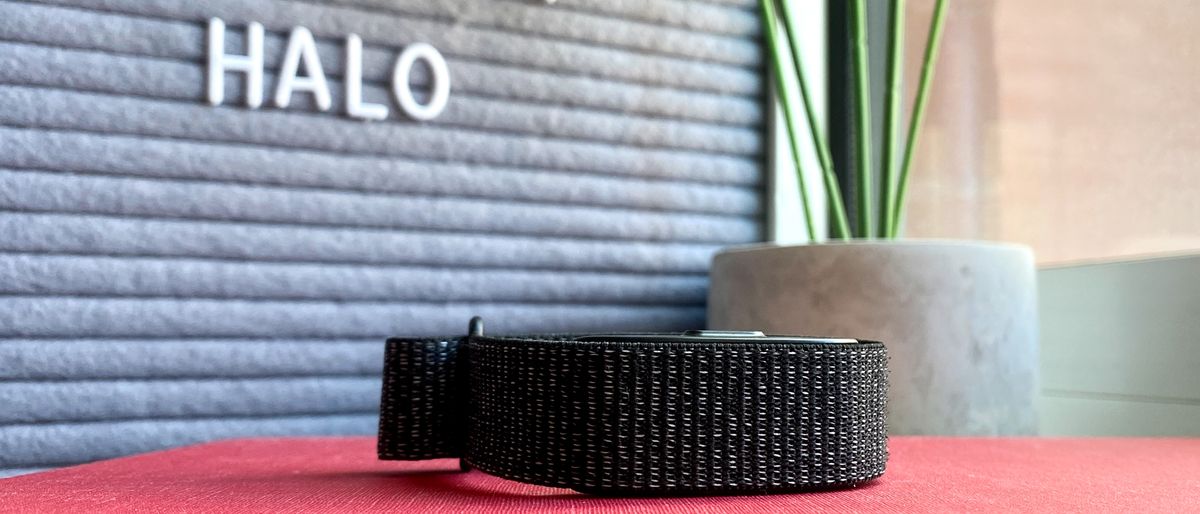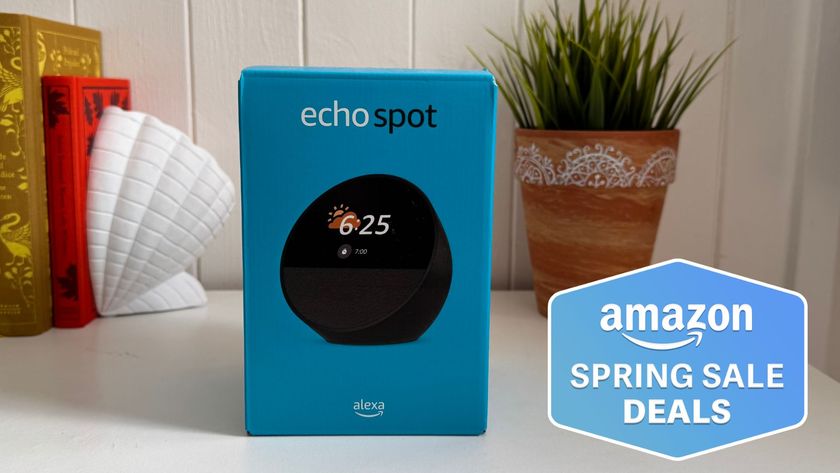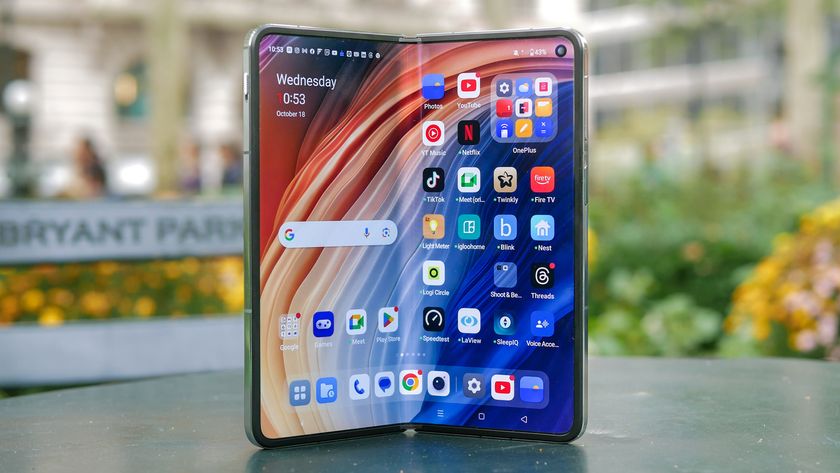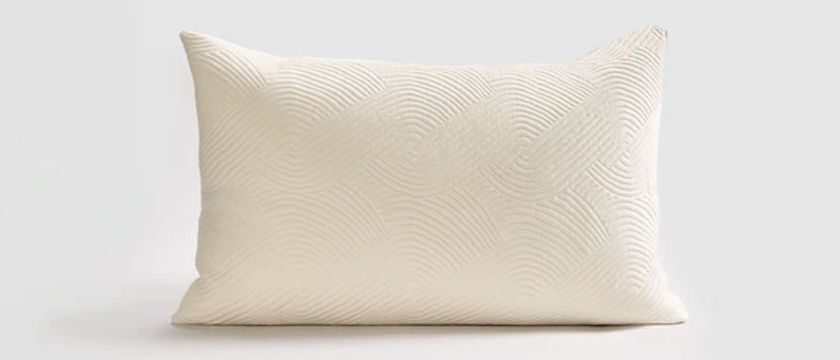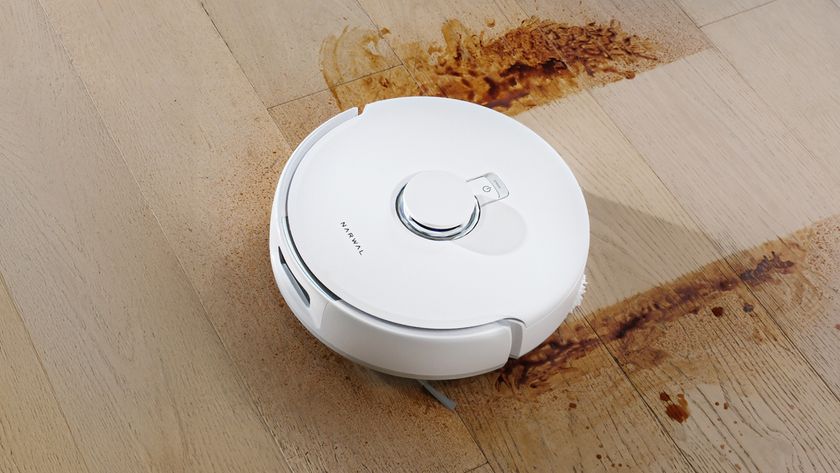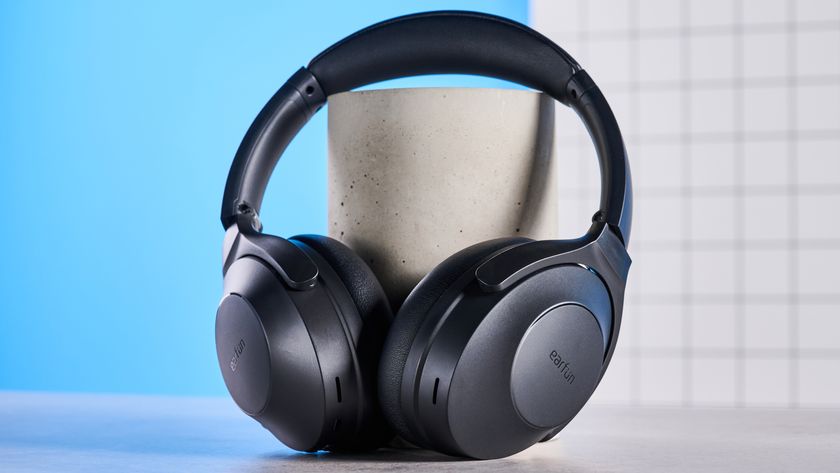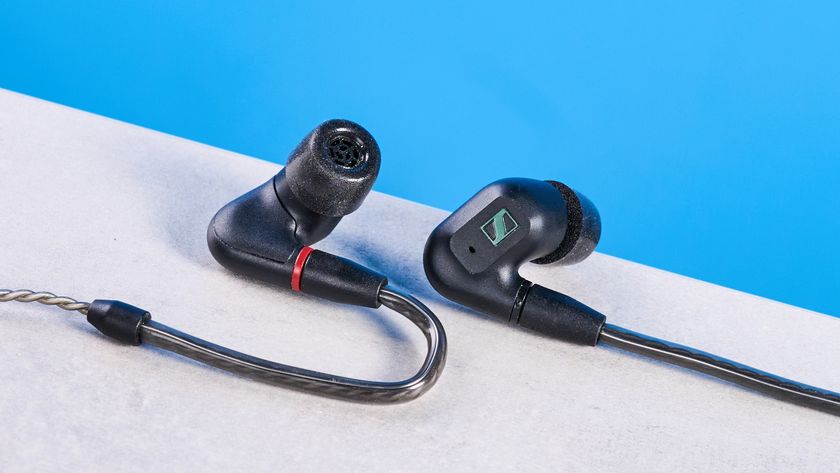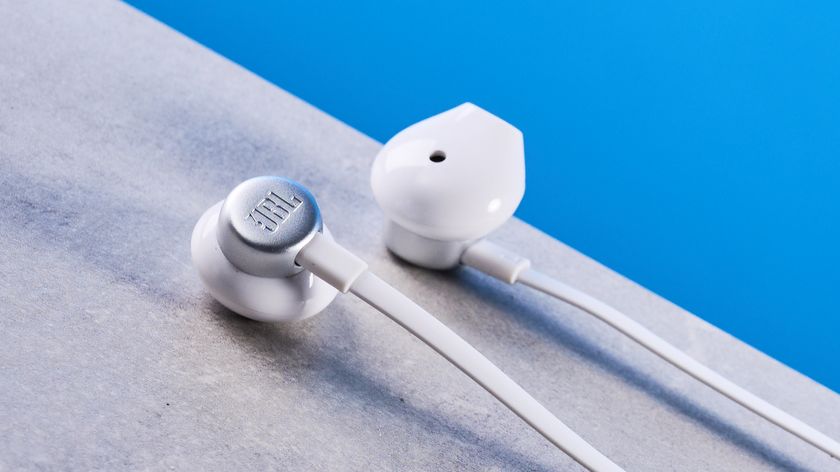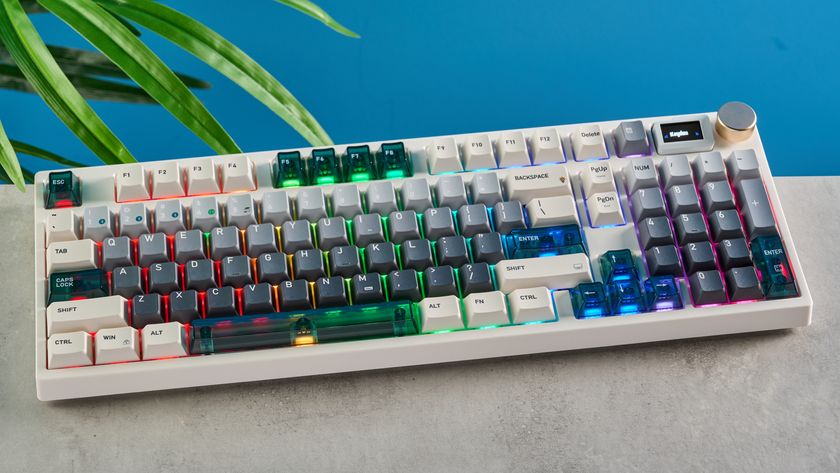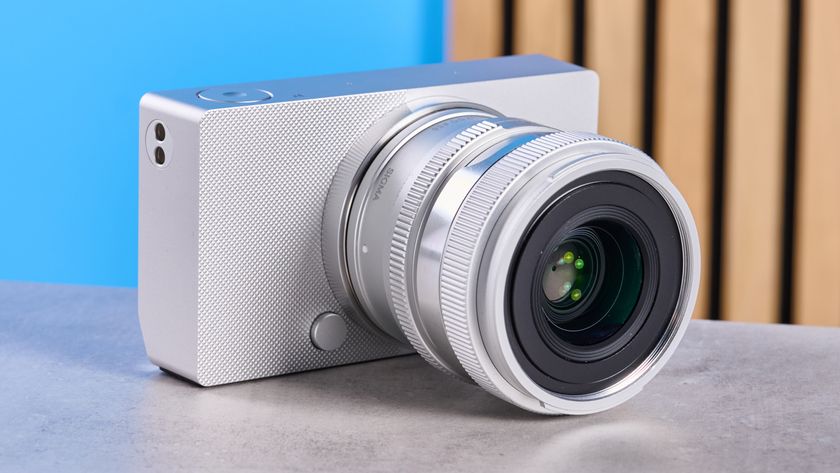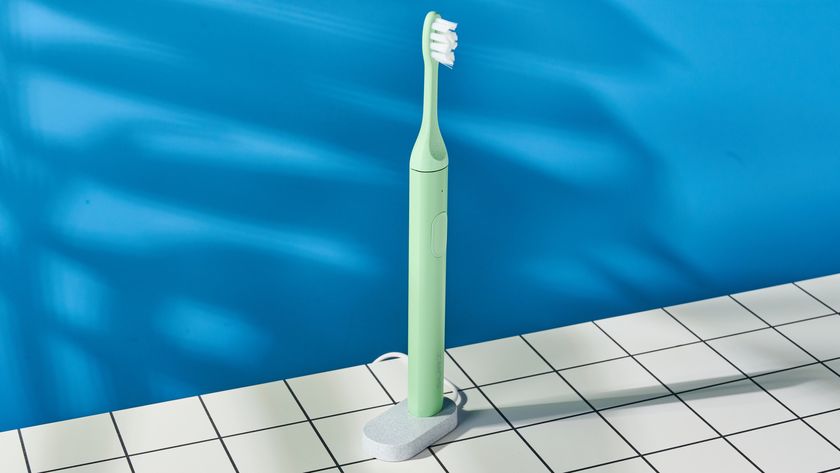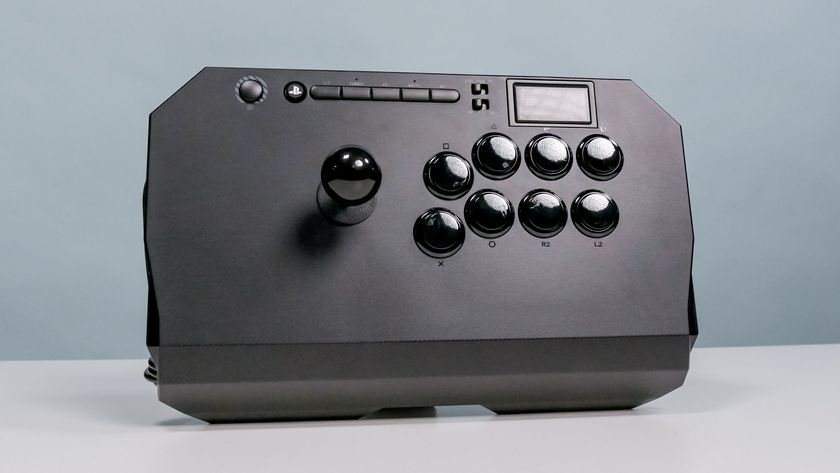Tom's Guide Verdict
Amazon Halo will tell you more about your health than you might ever want to know, so long as an AI-assisted understanding of your overall well-being doesn’t creep you out.
Pros
- +
Barely-there fit and feel
- +
Excellent companion app
- +
Tone analysis can be fascinating
Cons
- -
Tone analysis is also creepy, and zaps battery
- -
Body fat scans raise concerns
Why you can trust Tom's Guide
Price: $99
Battery life: 7 days (1-2 days with tone analysis)
Water resistance: 5 ATM
Weight: 0.83 ounces
Microphones: 2
I didn’t want to enjoy Amazon Halo. Its tone analysis feature seemed creepy and I dreaded the idea of a 3D body fat scan shaming me for the weight I’ve gained in my mid-area. But after testing this display-less fitness band, it’s not nearly as bad as I expected it would be. In fact, I kind of like it. But it’s also kind of... a lot.
Amazon Halo is a both a $99 activity tracker and $3.99 per month service that provides a holistic catalog of health metrics and ‘labs’ for helping you reach wellness goals. Although it’s an in-brand Amazon device, Alexa is surprisingly absent. Instead, the band’s built-in mics listen to how you speak and gauge the emotions you convey based on your tone. You can see how you sound to others, plus how well you sleep and how many activity points you’re banking, in the connected Halo app.
The Amazon Halo app is also how you capture 3D scans of your body which, using AI, determine your body fat percent and show you with a slider what you might look like with less fat. It didn’t take long for this feature to receive criticism for potentially exasperating body dysmorphia. As one of the many, many women for whom society has trained to obsess over weight and appearance, I deeply understand the cause for concern.
Although many of the best fitness trackers promote acute health awareness, this Amazon Halo review reckons with whether you can know your body too well. If you're interested in a version of this fitness band with a display, check out our Amazon Halo View review.
Amazon Halo review: Price and availability
Amazon Halo is available for purchase as of this writing. The band costs $99.99, and includes 6 months of Halo membership (usually $3.99 per month.).
When you're checking out, you can choose your size and one of three colors: Black/Onyx, Blush/Rose Gold and Winter/Silver.
Amazon Halo review: Design
The Amazon Halo fitness band looks like a fabric-swathed Fitbit Charge 4 that lost its screen, or like an extra long Apple Watch nylon sport loop band.
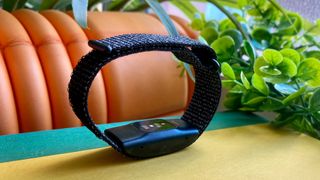
Its sensors are housed in an arced, stainless steel unit beneath the fabric. One side of the water-resistant sensor unit features and LED indicator light, two microphones and a single button.
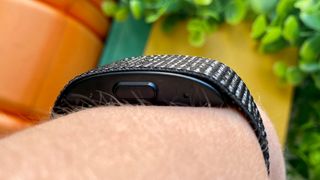
Of all the fitness trackers I’ve seen, the Halo is the most nondescript; it's almost a throwback to early Fitbits and wearables that lacked displays.
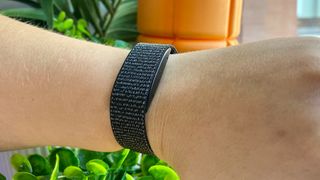
I don’t think I could ever wear the Amazon Halo without also wearing a smartwatch, but it’s comfortable, lightweight and sits flush enough to my skin to not bother me on my opposite wrist. I would even forget I had it on.
Amazon Halo review: Labs
The four pillars of Amazon Halo — activity, sleep, tone and body — all have actionable tools that cater to your motivations. These tools are sourced from third-party services and take the form of videos or soundscapes, for example. Some are as simple as holding yourself accountable for a bedtime.

Each lab encourages you to designate a time to be notified of that lab. One of my activity labs notifies me at 6 p.m. every day to do my workout, while my meditation lab reminds me to check in with myself at 10 p.m. and my bedtime notification let’s me know I should wind down at 11:30 pm.
Every Amazon Halo purchase comes with a six-month trial of the complementary Halo membership, which includes labs from known Headspace, Orangetheory, P.volve and Aaptiv, as well as medical authorities like the American Heart Association and Mayo Clinic.
After six months, the full suite of labs, which number more than 100, costs $3.99 per month. While you can choose which labs you want to use, you can’t selectively subscribe to individual labs.
Amazon Halo review: Activity tracking
As a standalone activity tracker, Amazon Halo won’t wow you, but it covers the basics. You can see your heart rate, steps and calories burned. For the most part my Halo readings for these metrics echoed my Apple Watch ones.
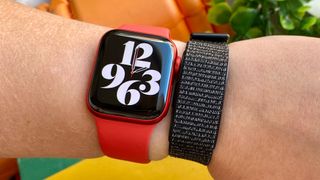
Halo implements a points system that’s like Fitbit’s Activity Zone Minutes, but less intense. When you exercise at a given intensity for a given duration, Halo will reward you with activity points. Your goal is to earn 150 activity points each week, with the risk of losing points for extended periods of time without movement. You score more points for higher exercise intensity levels, though.
I liked how Halo automatically tracked my long walks, although for most other exercises I had to manually input my activity type and duration. I wish I could do this before I start a workout, rather be expected to log it after.

In terms of fitness, Halo’s paid lab service offers access to guided exercise videos from a variety of well-known workout providers, like Orangethoery and P.volve. I started P.volve’s famed 30 Day Lengthen and Tone program, and while following along from my iPhone screen isn’t ideal, I appreciate Halo sending me a reminder at the same time every afternoon to get the hour-long class in. There are 8fit classes that are just 2 minutes, two-week yoga journeys from Openfit, and month-long walking initiatives form the Mayo Clinic, too, for example.
Amazon Halo review: Body fat scans
In case you didn't feel your smartphone knew enough about you, the Halo app uses your handset's cameras to render 3D scans of your body and determine your body fat percentage.

While you usually need to go to a doctor (or use one of the best smart scales) to figure out your body fat percentage, Amazon has figured out a way to measure it using AI. It’s not quite as easy as advertised, though. You need good lightning, the proper phone angle and limited clothing. When Halo is happy with these factors, the app will instruct you to rotate like a spray tan booth might.
I was a bit skeptical about the accuracy of these body fat percent readings, though to my surprise my first attempt matched the results I received on some of the best smart scales I tested recently. (It’s important to note that neither of these readings are as accurate as professional measurements.) Except scales just tell me the number — I’m not as obsessed with fat as I was when I was in college, but something about seeing my body rendered on my phone definitely stung.

So too did using the Halo app’s slider tool to see what my body would look like with more or less body fat. I’ve come to terms with my appearance, but I can’t help but worry that the intrusive nature of these scans could cause harm than good. Even if these body scan images are confined to your phone and are deleted once processed.
The Halo app suggests you don't scan yourself more than every two weeks, and the slider won’t show you what your form looks like with less than 12% body fat. Only users 18 or older can use the Halo band's body scan feature, too, although I advise that anyone who struggles with body dysmorphia or related body-image insecurities avoid Halo. I know I wouldn’t have been able to use it responsibly in my late teenage years.
If you or anyone you know is struggling with an eating disorder, the Alsana anonymous helpline is available for 24/7 support.
Amazon Halo review: Tone analysis
Ever wondered how you sound to others? The mics on the Amazon Halo band listens to your voice, and the app will analyze trends based on the varying tones of your communication.
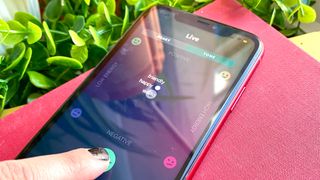
If I wasn’t so fascinated with my tone reports, I might be more wary of the feature. Although Amazon assures voice analysis is processed entirely on the user's smartphone and deleted after, there’s something spine-tingling about this level of intimacy with AI. At least nothing is recorded for playback — I’m relieved I didn’t have to listen to my own speech samples.
Which, for the most part, skewed negative. Both when I tested the live analysis feature and reviewed my tone highlights from the day, Halo often used adjectives like stressed, irritated, disappointed and anxious to describe the sound of my speech. This seemed accurate given the incessant work and personal pressures I’ve been dealing with. Only when I had dinner with an old friend and filmed some voiceovers for this review did words like amused, interested and focus appear.
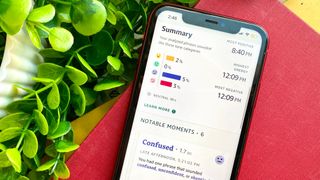
Halo provides timestamps for these ‘notable moments,’ which meant I could reflect on conversations I had throughout the day and take inventory of reasons I sounded irritated. I didn’t find myself making mindful changes to my voice, but instead trying to alleviate causes of my audible negativity. Halo won’t proactively suggest things like meditation and breathing exercises like the Fitbit Sense, but I’ve taken advantage of the relaxation-centric labs.
Of course, you can keep the microphones off, but you’d skip a rather central feature of this fitness tracker. I’ve only muted my Halo band when I wanted to save battery life.
Amazon Halo review: Sleep tracking
When you wear the Halo band to bed, the app can provide sleep analysis that, on paper, rivals Fitbit's sleep tracking software. Amazon says Halo sleep tracking can identify different stages of sleep and assign a sleep score based on the quality of your shuteye.
Even more, it tracks your body temperature using a sensor similar to the one in the Fitbit Sense. Amazon Halo will chart your temperature, along with movement and heart rate, to help you keep tabs on what factors might be impacting your zzzs.
Halo sleep tracking picked up on when I woke up in the middle of the night better than most fitness trackers I’ve tested. It even seemed more accurate than Apple Watch sleep tracking when it came to identifying how long it took me to fall asleep each night. I like how the Halo app provides plenty of related reading material and actionable data, too. Similar to activity labs, sleep labs provide calming sounds, bedtime reminders and meditation routines for improving for your rest.
Amazon Halo review: Battery life
Amazon says the Halo can last up to seven days on a single change and up to two days with the mic on, but I found the band fell short of these claims. I can hardly get a day out of the band when the mics are on for tone analysis; Iresorted to charging it up before bed each night alongside my Apple Watch so that it could track my sleep.
When I turned the microphones off, the Halo band lasted somewhere between 5 and 6 days, which isn’t very impressive for a fitness tracker without a display or other battery-draining features. At least it changes back up with Amazon’s proprietary charger in just 90 minutes.
Amazon Halo review: Verdict
Amazon Halo’s holistic approach to health tracking has its appeal. Its affordable entry point, discreet design, data accuracy and thorough companion app make Halo one of the most surprising wearables we’ve seen this year. Plus the large library third-party labs introduce a “choose your own adventure” element to improving your overall wellness. That alone is well worth $4 per month, in my opinion.
Voice analysis and body fat percent scans are features I might consider living without. Depending on your goals, I could see positive use cases for both, but some boundaries should remain between our bodies and our technology. Scantily clad scans, a slider rending your figure’s “what ifs” and eerily-on-point voice probes toe too close to that line for my comfort. Although I’m not rushing it off my wrist either. If you’re even marginally excited by the Black Mirror-ization of wearables like I am, Amazon Halo just might be up your alley.
Kate Kozuch is the managing editor of social and video at Tom’s Guide. She writes about smartwatches, TVs, audio devices, and some cooking appliances, too. Kate appears on Fox News to talk tech trends and runs the Tom's Guide TikTok account, which you should be following if you don't already. When she’s not filming tech videos, you can find her taking up a new sport, mastering the NYT Crossword or channeling her inner celebrity chef.
